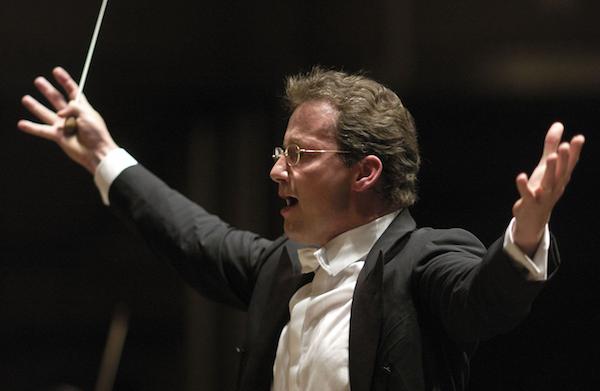
The Cleveland Orchestra delivers a memorable Mahler’s Sixth
By Sebastian Spreng, Visual Artist and Classical Music Writer
Now in its ninth year, the Cleveland Orchestra’s “winter residence” in Miami has divided and continues to divide local audiences. Some are loyal fans, whereas its crowd-pleasing programming puts others definitely off. However, the Cleveland’s performance of Mahler’s Sixth Symphony on March 6 was a welcome exception to the rule, raising hopes that such exceptions will henceforth become the rule.
In conductor Franz Welser-Möst’s hands, the Mahler concert erased the decidedly mixed impression left by the previous one, in which a first-rate performance of Shostakovich’s Sixth Symphony contrasted with a polished but colorless Beethoven’s Eroica. It constituted a surprising breath of fresh air that impressed the audience the way an orchestra of this caliber should. Captivated concert-goers, a younger-than-usual crowd, expressed their appreciation with a standing ovation, for once not the knee-jerk type that has become so widespread. Mahler was right when he said, “My time will come.” Today his music is not only an irresistible magnet; as time goes by, it sounds more “classical” in every sense: distant, yet significant and eternal.
This Sixth – tragic but not pathetic like Tchaikovsky’s – is, in the words of Alban Berg, “the only Sixth, the Pastoral notwithstanding.” It marks one of the peaks in Mahler’s brilliant oeuvre, overshadows the four Knaben Wunderhorn symphonies and foreshadows both the complex “bite” of the Seventh and the disarming immensity of the Ninth. It is yet another self-portrait, a life journey in four movements that stops at every conceivable mood and ends in the composer’s deep-rooted pessimism. In his brief remarks, the conductor called it “an inner trip into his subconscious,” alluding to the Mahler-Freud connection. The Austrian conductor, who delivered a notable Third Symphony two seasons ago, produced a splendid version: warm, luminous, rather orthodox, with no extreme edges. The orchestra performed flawlessly, displaying a matte, Central European golden patina. The musicians seemed engaged in their playing with rare passion, seldom witnessed in the superb acoustic framework that is the Arsht Center’s Knight Concert Hall.
Welser-Möst chose to follow the symphony’s original structure, with the andante in second place, after the allegro energico and its allusions to Bruckner and Alma Mahler. That andante, a piece of dreamlike lightness unique to Mahler, suggesting a gigantic bird struggling but failing to take flight, is definitely one of the composer’s loftiest achievements. The orchestra performed it with truly memorable exquisiteness and contained emotion. The silkiness of the strings, led by William Preucil, coupled with the almost imperceptible entry of the woodwinds and brass, conjured up a nocturnal landscape of a dreaminess rarely attained in a concert hall. The orchestra seemed to breathe in unison, slipping smoothly in and out of portamentos and glissandos. Welser-Möst did not attempt extremes, avoiding deep tones, stridencies and melodramatic excesses, but strove to convey the complexity of the score, revealing, in particular, the masterful orchestration of the scherzo. In the fourth movement’s last breath – enormous, like almost all of the composer’s last movements – featured a staggered succession of moods, of hope versus despair, as well as Webern echoes of the Second Viennese School, increasingly tragic and spasmodic until the brief, final death rattle.
This Sixth offered convincing proof that, as Mahler noted, “symphony is the world” and “should encompass everything.” Into his own, he said, he poured “everything he had experienced and suffered.” The Cleveland Orchestra’s gave a version that calls for more of the same. Perhaps the organization will soon schedule the Austrian conductor’s controversial Bruckner and certainly the Eighth (dubbed Symphony of a Thousand because of the number of performers it requires), a choral work that would grace the perfect venue that is Knight Concert Hall. If that is asking too much, one can always dream.
Recent Content
-
Artsarticle ·
-
Artsarticle ·
-
Artsarticle ·
